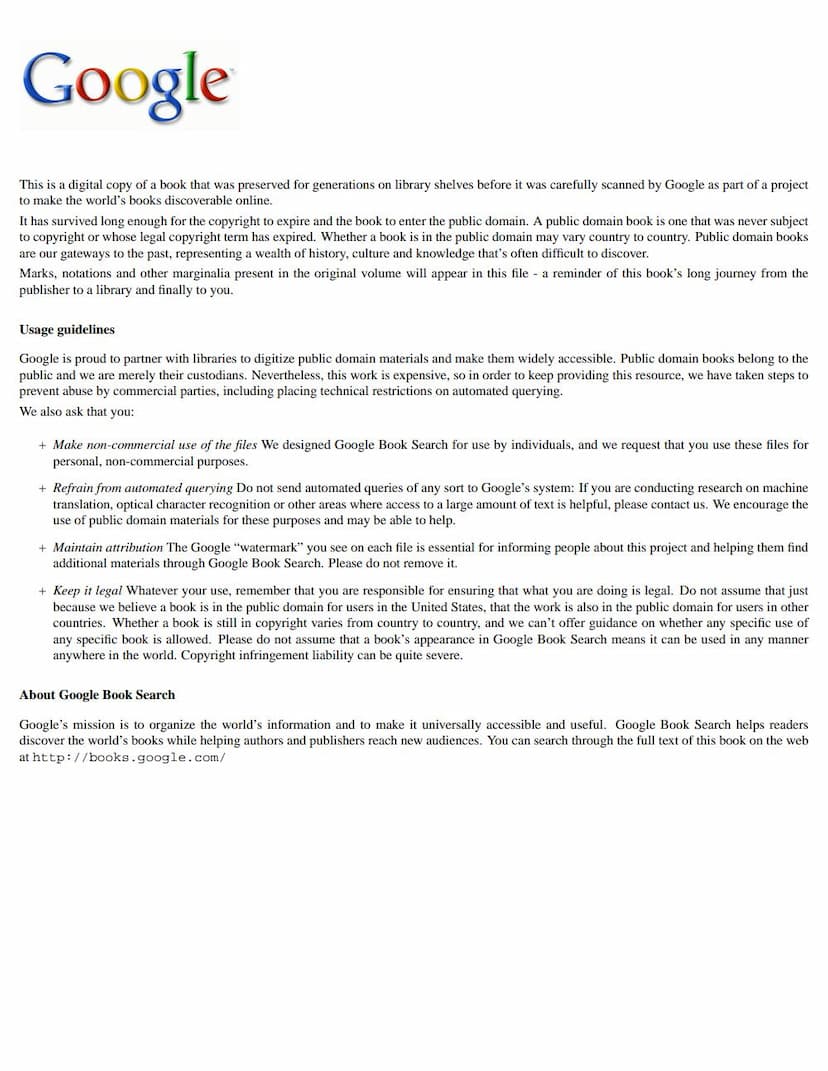Zend Avesta Part 02
Added to library: September 2, 2025
Loading image...

Summary
This document is "Zend Avesta Part 02" by James Darmesteter, published by Oxford. It is part of "The Sacred Books of the East" series. The provided text contains the Sîrôzahs, Yasts, and Nyâyis, which primarily deal with the mythical and legendary aspects of Zoroastrianism.
Here's a breakdown of the key elements and content:
Overall Structure and Content:
- Translations: The volume features translations of the Sîrôzahs, Yasts, and Nyâyis.
- Mythical and Legendary Lore: These texts are characterized by their focus on the mythical and legendary aspects of Zoroastrianism.
- Methodology: Darmesteter explains his translation methodology, emphasizing the etymological and comparative method due to the lack of traditional interpretations. He also highlights the use of Pahlavi, Persian, and Sanskrit translations that were previously unpublished.
- Assistance: Darmesteter acknowledges the assistance of Mr. West in improving the translation's readability and interpretation.
Key Texts Translated:
-
Sîrôzah:
- Meaning: "Thirty days."
- Content: A prayer composed of thirty invocations to the Izeds (divine beings) who preside over the thirty days of the month.
- Two Sîrôzahs exist, differing slightly in formula length and epithets.
- Recitation: In India, recited in honor of the dead and during specific monthly observances.
- Correspondence: A detailed mapping is provided between the Sîrôzah formulas and the Yasts dedicated to specific Izeds.
-
Yasts:
- Meaning: "Worshipping" or " Yasna."
- Content: Writings dedicated to praising and magnifying various Izeds. These are generally of a higher poetical and epical character, serving as valuable records of old Iranian mythology and historical legends.
- Parsi Belief: Formerly, each Amshaspand and Ized had a specific Yast, but only twenty Yasts and fragments of another are currently possessed.
- Order: The arrangement of Yasts follows the order of the Sîrôzah.
- Specific Yasts Translated (and their primary focus):
- Ormazd Yast (Yast I): Focuses on enumerating and lauding the names and virtues of Ahura Mazda.
- Haptân Yast (Yast II): A Yast for the seven Amshaspands, essentially an extract from the Sîrôzahs.
- Ardibehest Yast (Yast III): Praises Ardibehest (Asha-Vahista) and Airyaman, with emphasis on the Airyaman prayer's power against diseases.
- Khordâd Yast (Yast IV): Focuses on Haurvatât (Genius of Health and Waters) and the Bareshnûm ceremony.
- Âbân Yast (Yast V): Devoted to Ardvi Sûra Anâhita, the goddess of waters, and lists numerous heroes who worshipped her.
- Khôrshêd Yast (Yast VI): A Yast to the Sun, recited at various times, particularly those connected with the Sun and related deities.
- Mâh Yast (Yast VII): A Yast to the Moon, associated with the seed of the Bull and cosmic cycles.
- Tîr Yast (Yast VIII): Describes the struggle of the star Tistrya against the demon of drought, Apaosha, linked to the production of rain.
- Gôs Yast (Yast IX): Dedicated to Gôs (the Cow), personifying the animal kingdom, and Drvâspa.
- Mihir Yast (Yast X): A lengthy Yast to Mithra, focusing on his role as the god of heavenly light, truth, oaths, and his punishing power against liars. It also offers insights into a moral hierarchy.
- Srôsh Yast Hâdhôkht (Yast XI): Dedicated to Sraosha, the angel of divine worship, described as the incarnate Word.
- Rashn Yast (Yast XII): Dedicated to Rashnu Razista (Genius of Truth), the judge of the departed, who holds the scales of justice.
- Farvardin Yast (Yast XIII): Glorifies the Fravashis (inner powers or guardian spirits of all beings), listing the Fravashis of numerous mythical and historical figures.
- Bahrâm Yast (Yast XIV): Dedicated to Verethraghna, the Genius of Victory, detailing his ten incarnations and magical powers.
- Râm Yast (Yast XV): Dedicated to Rama Hvâstra and Vayu, the spirits of good pastures and wind/atmosphere, respectively.
- Dîn Yast (Yast XVI): Dedicated to Dîna (Daêna), the personification of the Zoroastrian Law or Religion, and Kista (religious knowledge).
- Ashi Yast (Yast XVII): Dedicated to Ashi Vanguhi, the feminine personification of piety, fortune, and wealth.
- Âståd Yast (Yast XVIII): Dedicated to Arstât (Truthfulness), linked with Mount Ushi-darena and the Hvarenô (royal glory).
- Zamyâd Yast (Yast XIX): Dedicated to the Genius of the Earth, but primarily focused on the kingly Glory (kavaêm Hvarenô) and those who possessed it, serving as a history of Iranian monarchy.
- Vanant Yast (Yast XX): A short supplement to the Tîr Yast, dedicated to the star Vanant.
- Yast Fragments (Yast XXI, XXII): These are described as fragments from the Hâdhôkht Nask, with Yast XXI praising the prayer "Ashem Vohû" and Yast XXII describing the fate of the soul after death.
- Âfrîn Paighambar Zartûst (Yast XXIII): A blessing by Zarathustra before King Vistâspa.
- Vistâsp Yast (Yast XXIV): Exhortations from Zarathustra to King Vistâspa to follow the Law of Mazda.
-
Nyâyis:
- Meaning: A "begging prayer."
- Content: Five specific prayers addressed to the Sun, Mithra, Moon, Waters, and Fire.
- Recitation: Mandated for laymen over eight years old, recited standing and girded with the Kôstî.
- Specific Nyâyis Translated:
- Khôrshed Nyâyis: For the Sun.
- Mihir Nyâyis: For Mithra.
- Mâh Nyâyis: For the Moon.
- Âbân Nyâyis: For Waters.
- Âtas Nyâyis: For Fire.
Introduction by Darmesteter:
- Purpose: The introduction outlines the content of the volume, focusing on the mythical and legendary aspects of the Avesta.
- Translation Challenges: Darmesteter acknowledges the difficulty of translation due to the absence of traditional interpretations and his reliance on comparative methods, including unpublished Pahlavi, Persian, and Sanskrit translations.
- Use of Firdausi: He notes the value of comparing the legends in Firdausi's Shâh Nâmah for understanding obscure passages in the Yasts.
This volume provides a foundational understanding of the Yasts and Sîrôzahs, which are crucial for grasping the rich mythology and cosmology of ancient Zoroastrianism.